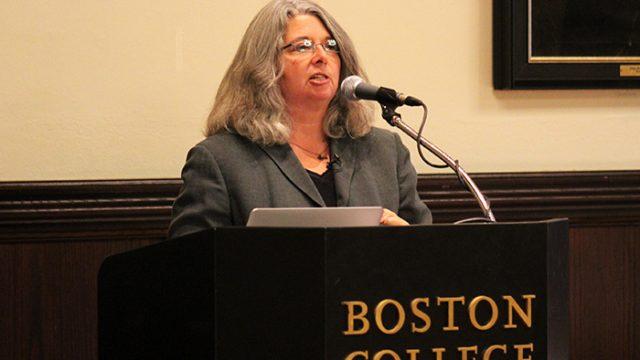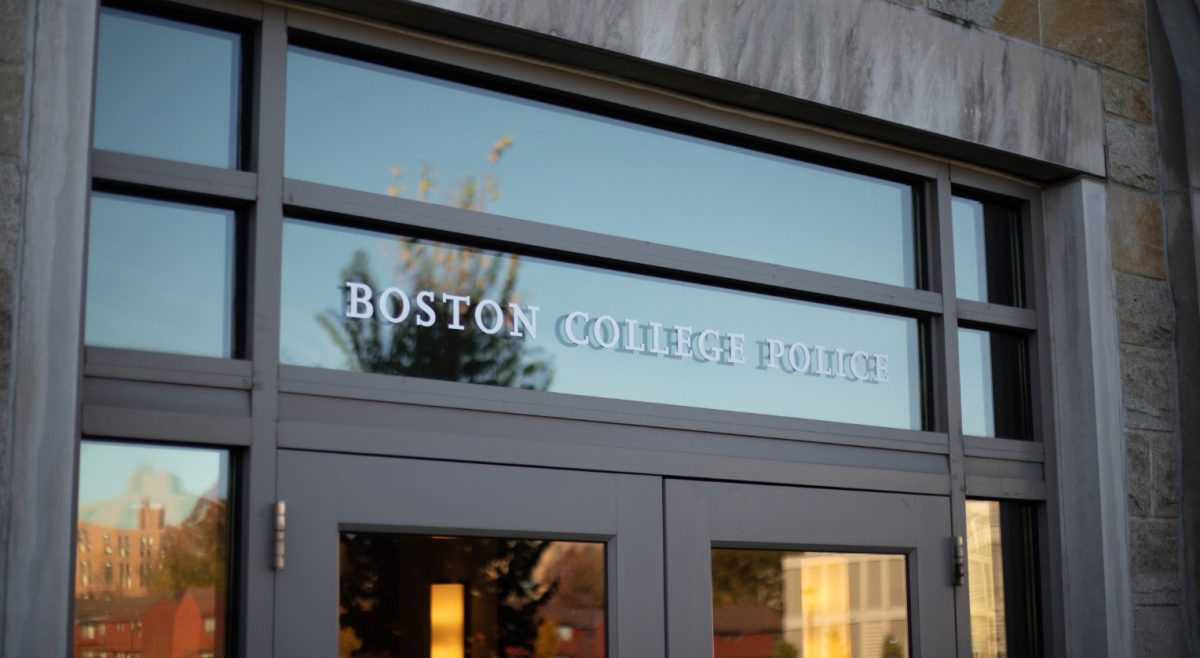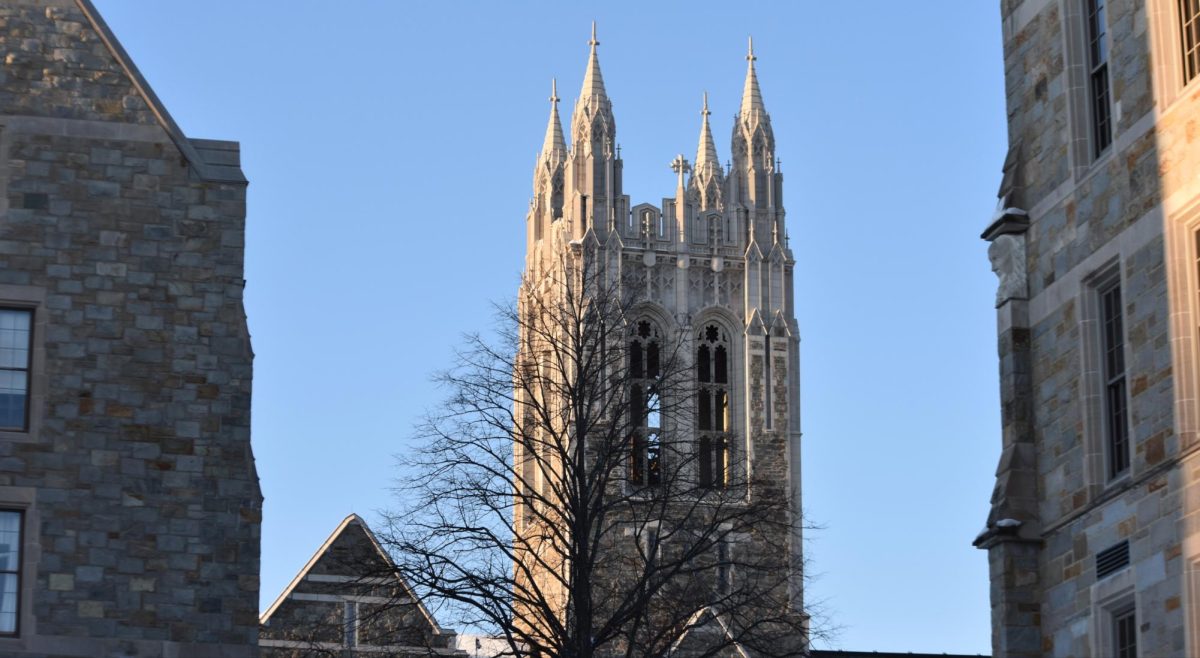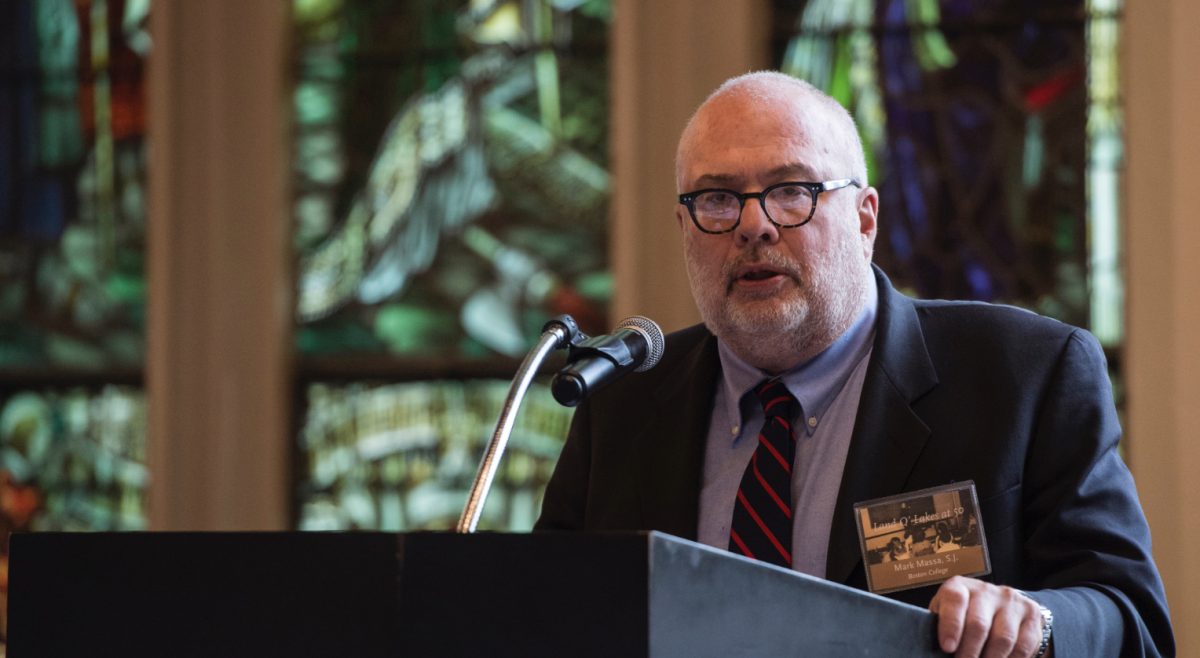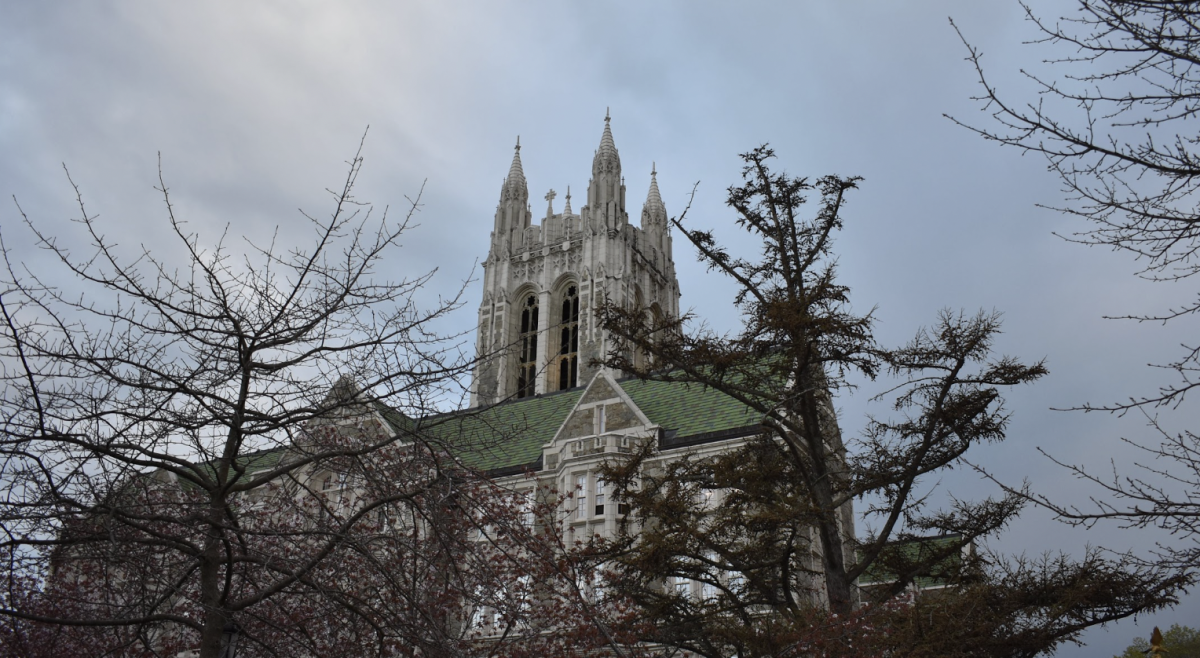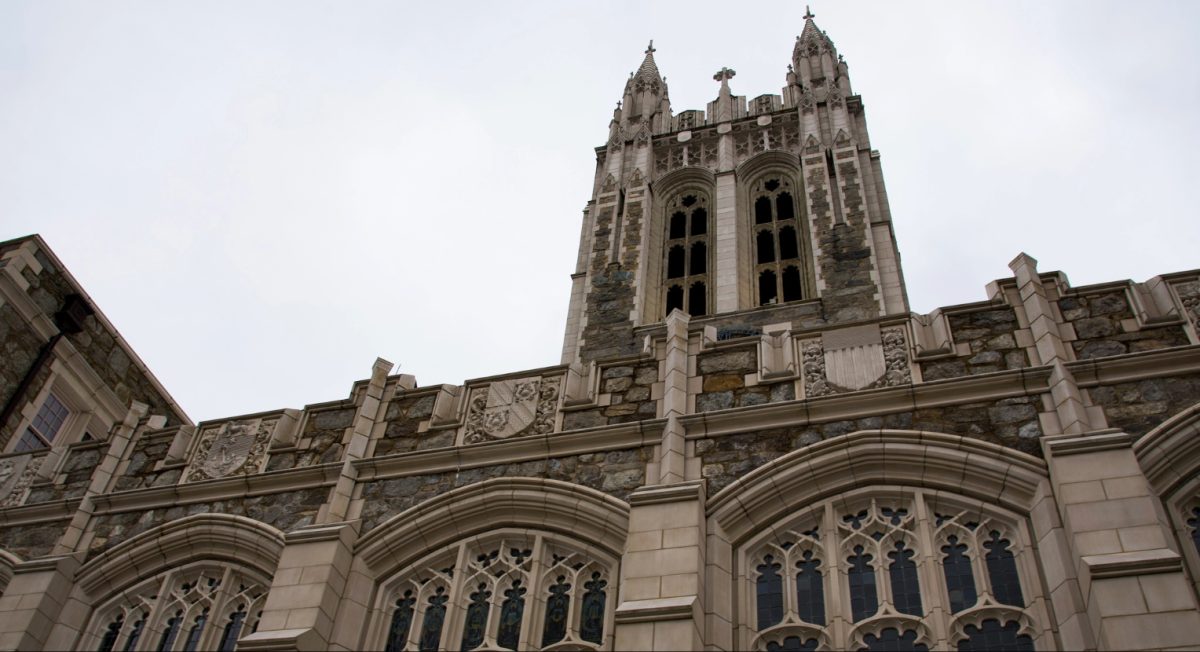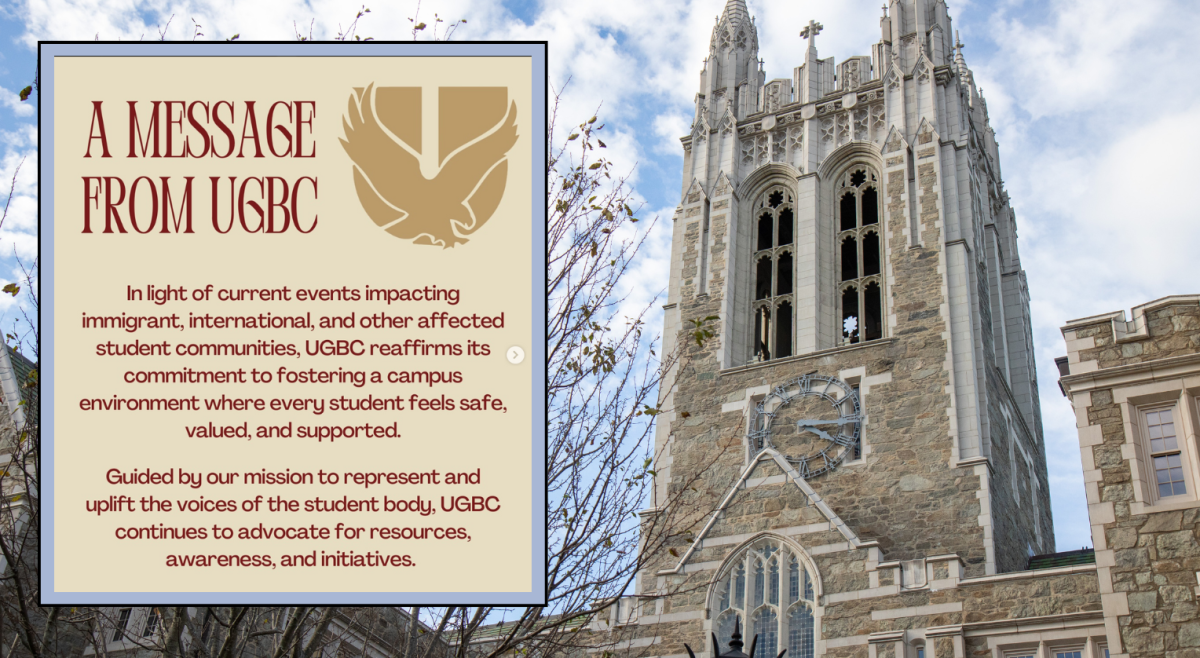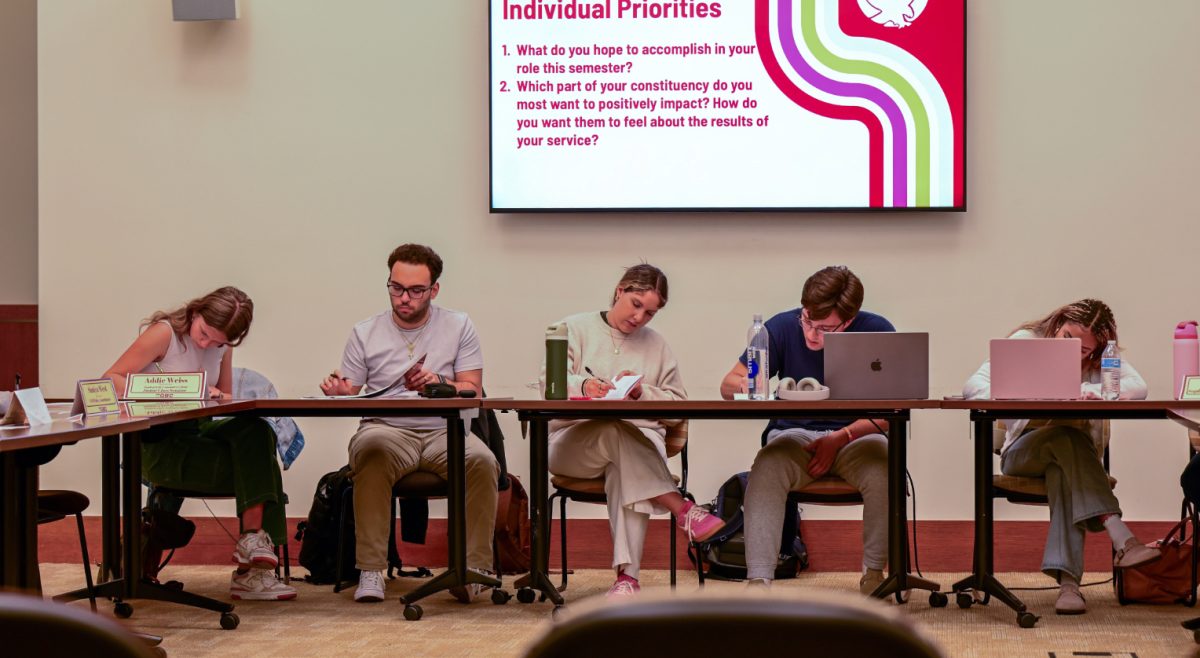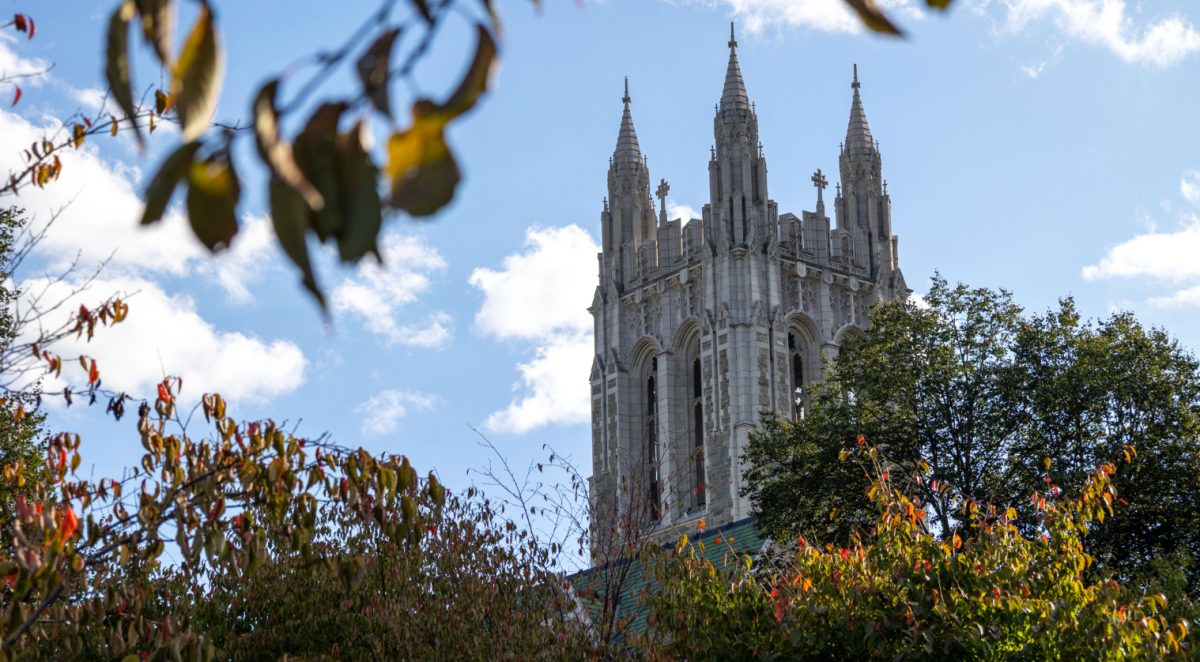During his lifetime, Galileo Galilei was known for inventing the telescope. But it was his other scientific discoveries, specifically his scientific evidence in favor of a heliocentric view of the cosmos, that got him into trouble.
Despite what many think, it was not Galileo who first proposed the heliocentric view of the solar system, according to Stanford University professor and award-winning historian Paula Findlen. Galileo simply used his telescope to prove fellow astronomer Nicolaus Copernicus’s new calculations of the cosmos.
Findlen gave a lecture at Boston College Wednesday night about her work regarding the life of Galileo. Findlen’s research centers on history, science, and the formation of early museums. The lecture, which was part of the Lowell Humanities Series, focused primarily on the nine years after the infamous trial of Galileo.
In June 1633, Galileo was put on trial before the Roman Inquisition, an arm of the Catholic Church. He was suspected of heresy and charged with acting against theological teachings for releasing his findings that the sun, rather than the earth, is the center of the solar system and that the earth itself spins on an axis.
The lecture began with a brief explanation of Galileo’s scientific contributions and the situation surrounding the trial itself. In Findlen’s experience, the story of Galileo is one of a misunderstood mystery.
“We know who did it,” Findlen said. “The question is what exactly is the crime?”
In Galileo’s time, the Catholic Church held significant power in the various states of Italy, and his discoveries posed a threat to traditional theology, which taught that the earth God created was the center of the universe.
What is of greatest interest to Findlen, however, was not the sensational trial in which Galileo was condemned, but rather how he lived after the trial. Findlen presented evidence to suggest that Galileo’s life did not revolve around tragedy, nor did it revolve around his scientific discoveries.
“We see a man who believes strongly in the path to knowledge that absolutely had to be explored.”
In his post-trial life, the network of acquaintances Galileo had developed became crucial. Residing predominantly in Venice, France, and Protestant strongholds in Eastern Europe, Galileo’s friends and former students worked to restore his reputation throughout Italy. Eventually, they facilitated the publication of several of his works, despite Vatican ordered prohibitions.
The French in particular worked to confirm and expand Galileo’s astronomical discoveries. They became a lifeline, connecting Galileo’s radical findings with the ideologies of the rest of Europe, which were more hospitable to progressive science than Catholicism. Galileo’s supporters in France later became the driving force behind the publication of Dialogue Concerning the Two Chief World Systems and Letter to the Grand Duchess Christina.
Letters of correspondence between Galileo and his friends in Venice, where he had taught at university for nearly 20 years, were central to Findlen’s research. They showed a continuation of support of Galileo’s scientific discoveries in spite of the Church’s hostility. For Findlen, these letters are a show of defiance from both Galileo and those loyal to him in the aftermath of the inquisition.
Support for Galileo even continued in Rome, where academics focused mostly on his work in math and physics, which were still permissible in the eyes of the Church. Findlen’s work shows that Galileo was far from a quiet decline in the face of misfortune. He had an “unquiet mind” and a support system that was just as eager for knowledge.
Findlen described the true dilemma for Galileo not as a struggle between the Church and himself, but rather between his faith and his scientific mind. He wanted science and religion to be able to coexist.
Findlen ended her lecture by discussing the almost sanctified way Galileo is portrayed in art and modern society. Galileo is revered as one of the brightest scientific minds in history, yet what Findlen was most struck by about this man was his optimism. Even in his last days before the trial, he didn’t fear punishment.
“We see a man who believes strongly in the path to knowledge that absolutely had to be explored,” she said.
Featured Image by Kaitlin Meeks / Heights Staff

